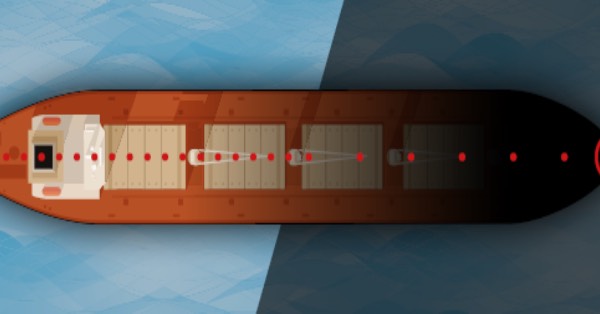Using VesselsValue Trade data, Peter Williams, Trade Flow Analyst, explores the recent events involving cargo ships in the Black Sea region switching off their AIS signals. The article looks at the importance of AIS signals, and how ‘going dark’ is considered a suspicious anomaly in the Maritime industry.
It has been reported by several agencies that grain from Ukraine is being loaded in Sevastopol, a major terminal in the province of Crimea, currently controlled by Russia. However, this is difficult to determine as the vessels in the relevant area of the Black Sea are increasingly operating in the ‘dark’.
Going ‘dark’ refers to a vessel that has stopped sending an Automatic Identification Systems (AIS) signal, something that is mandatory for most cargo ships. Amongst the most useful data provided by AIS transponders is vessel position and identification details; integral for ships to avoid collision, coastal authorities to see who is operating in their jurisdiction, and for VesselsValue to provide real time data on vessel stoppages, load/discharge activities and journeys.
Using our Trade data, we can establish instances where we have not received location and identification details for vessels operating in the Black Sea.
Observed Dark Spots
The map below shows AIS signals that we’ve received from a geared general cargo carrier as she enters the Black Sea. Each individual AIS signal received is shown by an orange arrow. The last AIS signal received was on the 23rd March, we next received an AIS signal on the 14th June with the vessel operating in the ‘dark’ for the period in between.

Similarly, the vessel in the below map went ‘dark’ for 5 days whilst operating in the Black Sea between the Kerch Strait to South of Sevastopol.

Dark Spots Are Rare
To put the ‘dark’ periods above into context, of the 70 container vessels currently operating in the US West Coast region, at the time of writing only 1 vessel has not transmitted an AIS signal within the last 6 hours. Likewise, only 5 of the 293 Bulkers underway in the North Atlantic have not transmitted an AIS signal within the last 6 hours. The 83 days operated in the ‘dark’ by the vessel in Figure 1 is extraordinary.
Going ‘dark’ is such an anomaly in the Maritime industry, that it is often interpreted as a signal that a vessel has operated suspiciously.
VesselsValue Trade
Our Trade services combine real time vessel movements with a variety of GIS data and behavioural algorithms to provide the closest possible reflection of current global trade.
With our Trade services you can access and view cargo mile demand, trade flows, stoppages and more. Providing you with a detailed view of underlying vessel activity for Bulkers, Tankers, Gas, Containers, Vehicle Carriers, Small Dry, Specialised Cargo, Reefers, and Cruise vessels.
Source: VesselsValue









































